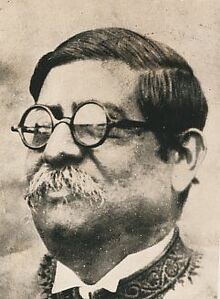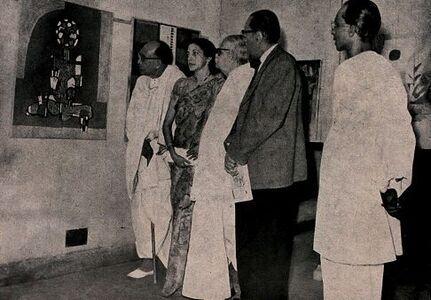Prof. Ordhendra Coomar Gangoly popularly known as O. C. Ganguly refered to KUMARS for his monumental work RUPAM. Rupam was an illustrated quarterly journal of Oriental art. And illustrated it was. Every page had litho prints of original paintings. Many of them of rare miniatures. It fell upon Kumar to trace them out. And that was no mean task. Kumar had to travel extensively in search of the exact paintings. But Gangoly rewarded him with fine reproduction of the same. They were printed on hand-made paper, by lithography process with letterpress printing. What a reproduction. They are still collector’s item.
Prof. O.C.Ganguly (1881-1974) is one of the foremost authorities on Indian Art. He was one of the founders of Indian Society of Oriental Art of which he was for many years Secretary and Vice President. Foremost he was a teacher of arts. Himself very erudite on Indian art, he took all opportunity to spread the knowledge. He wrote a number of books on Indian Art, chief among them being Rajput Paintings, the book was reviewed by none other that the famous authority on Indian Art Hermann Goetz in Artibus Asiae, His other well known book being Ragas and Raginis.
However, his most important work was Rupam. Rupam was his passion. He founded and edited Rupam, which was acclaimed as finest journal of Indian art. Each volume had approximately 106pages, profusely illustrated in color and black &white, including many tipped-in plates with vellum overlays. Text was in English. He was able to produces only forty-four issues of this highly important scholarly journal devoted to the arts of the Indian Subcontinent, Himalayas, China and Islam. Published between January 1920 and October 1930 (in English), subjects of discourse from only the first volume include the craftsmanship of Konark, Kangra miniatures, Mughal painting, the Ajanta Frescoes, South Indian temple architecture, Buddhist sculpture, as well as Chinese, Tibetan and Persian arts. It is generally believes that the production of Rupam had to be discontinued due to its high cover price , in spite of it being subsidized. The cover price was nearly Rs. 100, a princely sum in those days.




